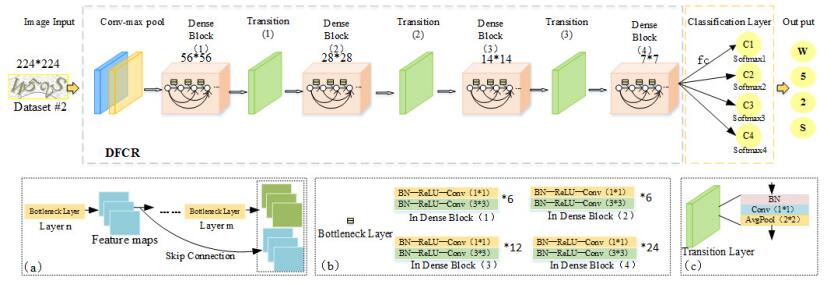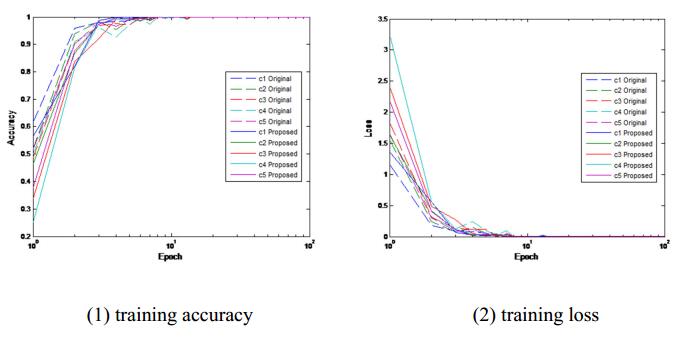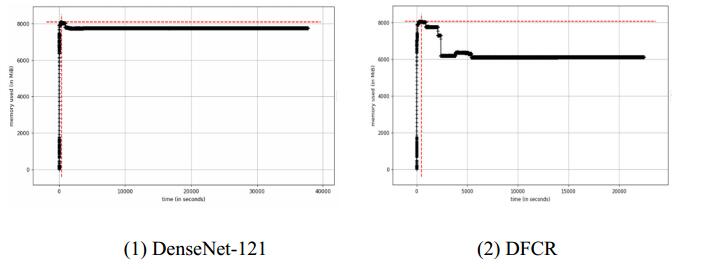| 1.
|
Lin Ding, Weihong Xu, Yuantao Chen, Shi Cheng,
Improved Density Peaks Clustering Based on Natural Neighbor Expanded Group,
2020,
2020,
1099-0526,
1,
10.1155/2020/8864239
|
|
| 2.
|
Xiaopeng Yan, Xingyuan Wang, Yongjin Xian,
Chaotic image encryption algorithm based on arithmetic sequence scrambling model and DNA encoding operation,
2021,
80,
1380-7501,
10949,
10.1007/s11042-020-10218-8
|
|
| 3.
|
Caitlin Grady, Sarah Rajtmajer, Lauren Dennis,
When Smart Systems Fail: The Ethics of Cyber–Physical Critical Infrastructure Risk,
2021,
2,
2637-6415,
6,
10.1109/TTS.2021.3058605
|
|
| 4.
|
Haolin Yang,
Captcha Recognition using convolutional neural networks with low structural complexity,
2020,
1693,
1742-6588,
012040,
10.1088/1742-6596/1693/1/012040
|
|
| 5.
|
Jiaohua Qin, Jianhua Chen, Xuyu Xiang, Yun Tan, Wentao Ma, Jing Wang,
A privacy-preserving image retrieval method based on deep learning and adaptive weighted fusion,
2020,
17,
1861-8200,
161,
10.1007/s11554-019-00909-3
|
|
| 6.
|
Yuantao Chen, Linwu Liu, Jiajun Tao, Runlong Xia, Qian Zhang, Kai Yang, Jie Xiong, Xi Chen,
The improved image inpainting algorithm via encoder and similarity constraint,
2020,
0178-2789,
10.1007/s00371-020-01932-3
|
|
| 7.
|
Qiang Liu, Xuyu Xiang, Jiaohua Qin, Yun Tan, Junshan Tan, Yuanjing Luo,
Coverless steganography based on image retrieval of DenseNet features and DWT sequence mapping,
2020,
192,
09507051,
105375,
10.1016/j.knosys.2019.105375
|
|
| 8.
|
Xiaohui Zhang, Xinhua Liu, Thompson Sarkodie-Gyan, Zhixiong Li,
Development of a character CAPTCHA recognition system for the visually impaired community using deep learning,
2021,
32,
0932-8092,
10.1007/s00138-020-01160-8
|
|
| 9.
|
Nan Pan, Jiaohua Qin, Yun Tan, Xuyu Xiang, Guimin Hou,
A video coverless information hiding algorithm based on semantic segmentation,
2020,
2020,
1687-5281,
10.1186/s13640-020-00512-8
|
|
| 10.
|
Chia-Yuan Hsu, Lu-En Lin, Chang Hong Lin,
Age and gender recognition with random occluded data augmentation on facial images,
2021,
1380-7501,
10.1007/s11042-020-10141-y
|
|
| 11.
|
Achmad Abdurrazzaq, Ahmad Kadri Junoh, Zainab Yahya, Ismail Mohd,
New white blood cell detection technique by using singular value decomposition concept,
2021,
80,
1380-7501,
4627,
10.1007/s11042-020-09946-8
|
|
| 12.
|
Yuanjing Luo, Jiaohua Qin, Xuyu Xiang, Yun Tan, Qiang Liu, Lingyun Xiang,
Coverless real-time image information hiding based on image block matching and dense convolutional network,
2020,
17,
1861-8200,
125,
10.1007/s11554-019-00917-3
|
|
| 13.
|
Dengyong Zhang, Haixin Tong, Feng Li, Lingyun Xiang, Xiangling Ding,
An Ultra-Short-Term Electrical Load Forecasting Method Based on Temperature-Factor-Weight and LSTM Model,
2020,
13,
1996-1073,
4875,
10.3390/en13184875
|
|
| 14.
|
Xintao Duan, Wenxin Wang, Nao Liu, Dongli Yue, Zimei Xie, Chuan Qin,
StegoPNet: Image Steganography With Generalization Ability Based on Pyramid Pooling Module,
2020,
8,
2169-3536,
195253,
10.1109/ACCESS.2020.3033895
|
|
| 15.
|
Zhangdong Wang, Jiaohua Qin, Xuyu Xiang, Yun Tan,
A privacy-preserving and traitor tracking content-based image retrieval scheme in cloud computing,
2021,
0942-4962,
10.1007/s00530-020-00734-w
|
|
| 16.
|
Jiaohua Qin, Wenyan Pan, Xuyu Xiang, Yun Tan, Guimin Hou,
A biological image classification method based on improved CNN,
2020,
58,
15749541,
101093,
10.1016/j.ecoinf.2020.101093
|
|
| 17.
|
Vaibhavi Deshmukh, Swarnima Deshmukh, Shivani Deosatwar, Reva Sarda, Lalit Kulkarni,
2020,
Versatile CAPTCHA Generation Using Machine Learning and Image Processing,
978-1-7281-6324-6,
385,
10.1109/ICCCA49541.2020.9250830
|
|
| 18.
|
Lingyun Xiang, Shuanghui Yang, Yuhang Liu, Qian Li, Chengzhang Zhu,
Novel Linguistic Steganography Based on Character-Level Text Generation,
2020,
8,
2227-7390,
1558,
10.3390/math8091558
|
|
| 19.
|
Zhong Wang, Peibei Shi, M. Irfan Uddin,
CAPTCHA Recognition Method Based on CNN with Focal Loss,
2021,
2021,
1099-0526,
1,
10.1155/2021/6641329
|
|
| 20.
|
Nan Li, Qianyi Jiang, Qi Song, Rui Zhang, Xiaolin Wei,
2020,
Chapter 5,
978-3-030-57057-6,
60,
10.1007/978-3-030-57058-3_5
|
|
| 21.
|
Zhiyang Wang,
An algorithm for ATM recognition of spliced money based on image features,
2021,
1380-7501,
10.1007/s11042-020-10348-z
|
|
| 22.
|
Jiangchun Mo, Yucai Zhou,
The image inpainting algorithm used on multi-scale generative adversarial networks and neighbourhood,
2020,
61,
0005-1144,
704,
10.1080/00051144.2020.1821535
|
|
| 23.
|
Yuantao Chen, Haopeng Zhang, Linwu Liu, Xi Chen, Qian Zhang, Kai Yang, Runlong Xia, Jingbo Xie,
Research on image Inpainting algorithm of improved GAN based on two-discriminations networks,
2020,
0924-669X,
10.1007/s10489-020-01971-2
|
|
| 24.
|
Qiang Liu, Xuyu Xiang, Jiaohua Qin, Yun Tan, Yao Qiu,
Coverless image steganography based on DenseNet feature mapping,
2020,
2020,
1687-5281,
10.1186/s13640-020-00521-7
|
|
| 25.
|
Dengyong Zhang, Xiao Chen, Feng Li, Arun Kumar Sangaiah, Xiangling Ding, Honghao Gao,
Seam-Carved Image Tampering Detection Based on the Cooccurrence of Adjacent LBPs,
2020,
2020,
1939-0122,
1,
10.1155/2020/8830310
|
|
| 26.
|
Jiaohua Qin, Yuanjing Luo, Xuyu Xiang, Yun Tan, Huajun Huang,
Coverless Image Steganography: A Survey,
2019,
7,
2169-3536,
171372,
10.1109/ACCESS.2019.2955452
|
|
| 27.
|
Jiaohua Qin, Jing Wang, Yun Tan, Huajun Huang, Xuyu Xiang, Zhibin He,
Coverless Image Steganography Based on Generative Adversarial Network,
2020,
8,
2227-7390,
1394,
10.3390/math8091394
|
|
| 28.
|
Dengyong Zhang, Shanshan Wang, Feng Li, Shang Tian, Jin Wang, Xiangling Ding, Rongrong Gong, Arun K. Sangaiah,
An Efficient ECG Denoising Method Based on Empirical Mode Decomposition, Sample Entropy, and Improved Threshold Function,
2020,
2020,
1530-8677,
1,
10.1155/2020/8811962
|
|
| 29.
|
Lei Yang, Li Feng, Longqing Zhang, Liwei Tian,
Predicting freshmen enrollment based on machine learning,
2021,
0920-8542,
10.1007/s11227-021-03763-y
|
|
| 30.
|
Yifu Zeng, Yi Guo, Jiayi Li,
Recognition and extraction of high-resolution satellite remote sensing image buildings based on deep learning,
2021,
0941-0643,
10.1007/s00521-021-06027-1
|
|
| 31.
|
Zhangdong Wang, Jiaohua Qin, Xuyu Xiang, Yun Tan, Jia Peng,
A privacy-preserving cross-media retrieval on encrypted data in cloud computing,
2023,
73,
22142126,
103440,
10.1016/j.jisa.2023.103440
|
|
| 32.
|
Xiaojiang Zuo, Xiao Wang, Rui Han,
2022,
An Empirical Analysis of CAPTCHA Image Design Choices in Cloud Services,
978-1-6654-0926-1,
1,
10.1109/INFOCOMWKSHPS54753.2022.9798343
|
|
| 33.
|
Yao Wang, Yuliang Wei, Mingjin Zhang, Yang Liu, Bailing Wang,
Make complex CAPTCHAs simple: A fast text captcha solver based on a small number of samples,
2021,
578,
00200255,
181,
10.1016/j.ins.2021.07.040
|
|
| 34.
|
Zilong Zhuang, Ying Liu, Yutu Yang, Yinxi Shen, Binli Gou,
Color Regression and Sorting System of Solid Wood Floor,
2022,
13,
1999-4907,
1454,
10.3390/f13091454
|
|
| 35.
|
Qingyang Zhou, Jiaohua Qin, Xuyu Xiang, Yun Tan, Neal N. Xiong,
Algorithm of Helmet Wearing Detection Based on AT-YOLO Deep Mode,
2021,
69,
1546-2226,
159,
10.32604/cmc.2021.017480
|
|
| 36.
|
Qiang Liu, Xuyu Xiang, Jiaohua Qin, Yun Tan, Qin Zhang,
A Robust Coverless Steganography Scheme Using Camouflage Image,
2022,
32,
1051-8215,
4038,
10.1109/TCSVT.2021.3108772
|
|
| 37.
|
Abhishek Sharma, Shilpi Sharma, Saksham Gulati,
CAPTCHA Robustness,
2022,
9,
2640-4079,
1,
10.4018/IJSST.299038
|
|
| 38.
|
Yang Chen, Xiaonan Luo, Songhua Xu, Ruiai Chen,
2022,
CaptchaGG: A linear graphical CAPTCHA recognition model based on CNN and RNN,
978-1-6654-5478-0,
175,
10.1109/ICDH57206.2022.00034
|
|
| 39.
|
P. L. Chithra, K. Sathya,
CAPTCHAs against meddler image identification based on a convolutional neural network,
2022,
81,
1380-7501,
8633,
10.1007/s11042-022-11961-w
|
|
| 40.
|
Pu Tian, Weixian Liao, Turhan Kimbrough, Erik Blasch, Wei Yu,
2022,
Chapter 2,
978-3-031-09144-5,
17,
10.1007/978-3-031-09145-2_2
|
|
| 41.
|
Ajay Sudhir Bale, S. Saravana Kumar, M. S. Kiran Mohan, N. Vinay,
2022,
Chapter 15,
978-3-030-75944-5,
281,
10.1007/978-3-030-75945-2_15
|
|
| 42.
|
Lingyun Xiang, Guohan Zhao, Qian Li, Gwang-jun Kim, Osama Alfarraj, Amr Tolba,
A Fast and Effective Multiple Kernel Clustering Method on Incomplete Data,
2021,
67,
1546-2226,
267,
10.32604/cmc.2021.013488
|
|
| 43.
|
Daniel Aguilar, Daniel Riofrio, Diego Benitez, Noel Perez, Ricardo Flores Moyano,
2021,
Text-based CAPTCHA Vulnerability Assessment using a Deep Learning-based Solver,
978-1-6654-4141-4,
1,
10.1109/ETCM53643.2021.9590750
|
|
| 44.
|
Denis O. Ishkov, Valery I. Terekhov,
2022,
Text CAPTCHA Traversal with ConvNets: Impact of Color Channels,
978-1-6654-1434-0,
1,
10.1109/REEPE53907.2022.9731423
|
|
| 45.
|
Zhangdong Wang, Jiaohua Qin, Xuyu Xiang, Yun Tan, Neal N. Xiong,
Criss-Cross Attentional Siamese Networks for Object Tracking,
2022,
73,
1546-2226,
2931,
10.32604/cmc.2022.028896
|
|
| 46.
|
Lingyun Xiang, Guoqing Guo, Qian Li, Chengzhang Zhu, Jiuren Chen, Haoliang Ma,
Spam Detection in Reviews Using LSTM-Based Multi-Entity Temporal Features,
2020,
26,
1079-8587,
1375,
10.32604/iasc.2020.013382
|
|
| 47.
|
Minghui Wei, Jingjing Tang, Haotian Tang, Rui Zhao, Xiaohui Gai, Renying Lin, Zhihan Lv,
Adoption of Convolutional Neural Network Algorithm Combined with Augmented Reality in Building Data Visualization and Intelligent Detection,
2021,
2021,
1099-0526,
1,
10.1155/2021/5161111
|
|
| 48.
|
Tang Xiaohui,
An adaptive genetic algorithm-based background elimination model for English text,
2022,
26,
1432-7643,
8133,
10.1007/s00500-022-07204-7
|
|
| 49.
|
Yao Wang, Yuliang Wei, Yifan Zhang, Chuhao Jin, Guodong Xin, Bailing Wang,
Few-shot learning in realistic settings for text CAPTCHA recognition,
2023,
0941-0643,
10.1007/s00521-023-08262-0
|
|
| 50.
|
Valery Terekhov, Valery Chernenky, Denis Ishkov,
2022,
Chapter 10,
978-3-031-15167-5,
111,
10.1007/978-3-031-15168-2_10
|
|
| 51.
|
Zongshuai Liu, Xuyu Xiang, Jiaohua Qin, Qin Zhang, Neal N. Xiong,
Image Recognition of Citrus Diseases Based on Deep Learning,
2020,
66,
1546-2226,
457,
10.32604/cmc.2020.012165
|
|
| 52.
|
Ke Qing, Rong Zhang,
2022,
An Efficient ConvNet for Text-based CAPTCHA Recognition,
979-8-3503-3242-1,
1,
10.1109/ISPACS57703.2022.10082852
|
|
| 53.
|
Wan Xing, Mohd Rizman Sultan Mohd, Juliana Johari, Fazlina Ahmat Ruslan,
2023,
A Review on Text-based CAPTCHA Breaking Based on Deep Learning Methods,
979-8-3503-2903-2,
171,
10.1109/CEDL60560.2023.00040
|
|
| 54.
|
Soumen Sinha, Mohammed Imaz Surve,
2023,
CAPTCHA Recognition And Analysis Using Custom Based CNN Model - Capsecure,
979-8-3503-0060-4,
244,
10.1109/ICETCI58599.2023.10331187
|
|
| 55.
|
Yaoting Li, Haixia Pan, Huolong Ye, Jiayu Zheng,
2023,
Transformer Encoder for Efficient CAPTCHA Recognize,
979-8-3503-3144-8,
355,
10.1109/CBASE60015.2023.10439128
|
|
| 56.
|
2024,
Redefining Security: Unveiling the Vulnerabilities of Captcha Mechanisms Using Deep Learning,
979-8-3503-0661-3,
1,
10.1109/ESCI59607.2024.10497359
|
|
| 57.
|
Xuyu Xiang, Yang Tan, Jiaohua Qin, Yun Tan,
Advancements and challenges in coverless image steganography: A survey,
2025,
228,
01651684,
109761,
10.1016/j.sigpro.2024.109761
|
|
| 58.
|
Tao Li, Jiawei Yang, Chenxi Li, Lulu Lv, Kang Liu, Zhipeng Yuan, Youyong Li, Hongqing Yu,
2024,
Chapter 4,
978-3-031-52215-4,
41,
10.1007/978-3-031-52216-1_4
|
|
| 59.
|
Ashutosh Thakur, Priya Singh,
2024,
Chapter 33,
978-981-99-6754-4,
431,
10.1007/978-981-99-6755-1_33
|
|
| 60.
|
Tong Ji, Yuxin Luo, Yifeng Lin, Yuer Yang, Qian Zheng, Siwei Lian, Junjie Li,
ImageVeriBypasser: An image verification code recognition approach based on Convolutional Neural Network,
2024,
41,
0266-4720,
10.1111/exsy.13658
|
|
| 61.
|
Xing Wan, Juliana Johari, Fazlina Ahmat Ruslan,
Variational Color Shift and Auto-Encoder Based on Large Separable Kernel Attention for Enhanced Text CAPTCHA Vulnerability Assessment,
2024,
15,
2078-2489,
717,
10.3390/info15110717
|
|
| 62.
|
Xing Wan, Juliana Johari, Fazlina Ahmat Ruslan,
Adaptive CAPTCHA: A CRNN-Based Text CAPTCHA Solver with Adaptive Fusion Filter Networks,
2024,
14,
2076-3417,
5016,
10.3390/app14125016
|
|
| 63.
|
Matine Hajyan, Alireza Hosseni, Ramin Toosi, Mohammad Ali Akhaee,
2023,
Farsi CAPTCHA Recognition Using Attention-Based Convolutional Neural Network,
979-8-3503-9969-1,
221,
10.1109/ICWR57742.2023.10139078
|
|
| 64.
|
N Valarmathi, M Bharathi Kannan, M Elankumaran, M Gowri Shankar, B Gowtham,
2023,
Fruit Disease Prediction with Fertilizer Recommendation for Citrus Family using Deep Learning,
978-1-6654-9199-0,
113,
10.1109/ICSCDS56580.2023.10104601
|
|
| 65.
|
Xiaodong Wei, Zhichun Wang, Xuebin Chen, Hari Mohan Srivastava,
2023,
Research on ship identification based on VGG network and millimeter wave radar,
9781510667600,
182,
10.1117/12.2686259
|
|
| 66.
|
Hongfeng Niu, Ang Wei, Yunpeng Song, Zhongmin Cai,
Exploring visual representations of computer mouse movements for bot detection using deep learning approaches,
2023,
229,
09574174,
120225,
10.1016/j.eswa.2023.120225
|
|
| 67.
|
Mikołaj Wysocki, Henryk Gierszal, Piotr Tyczka, George Pantelis, Sophia Karagiorgou,
2024,
Benchmarking of Different YOLO Models for CAPTCHAs Detection and Classification,
979-8-3503-6248-0,
2846,
10.1109/BigData62323.2024.10826049
|
|
| 68.
|
N Kopperundevi, P. SaiTejeswarreddy, Malladi Revanth, M Gautham,
2024,
Captcha Recognition Using CNN,
979-8-3503-5421-8,
1,
10.1109/ASIANCON62057.2024.10838000
|
|
| 69.
|
Xinyao Ma, Zaiqiao Ye, Sameer Patil,
2022,
Do Regional Variations Affect the CAPTCHA User Experience? A Comparison of CAPTCHAs in China and the United States,
9781450394758,
1,
10.1145/3551349.3561146
|
|










 DownLoad:
DownLoad:

















